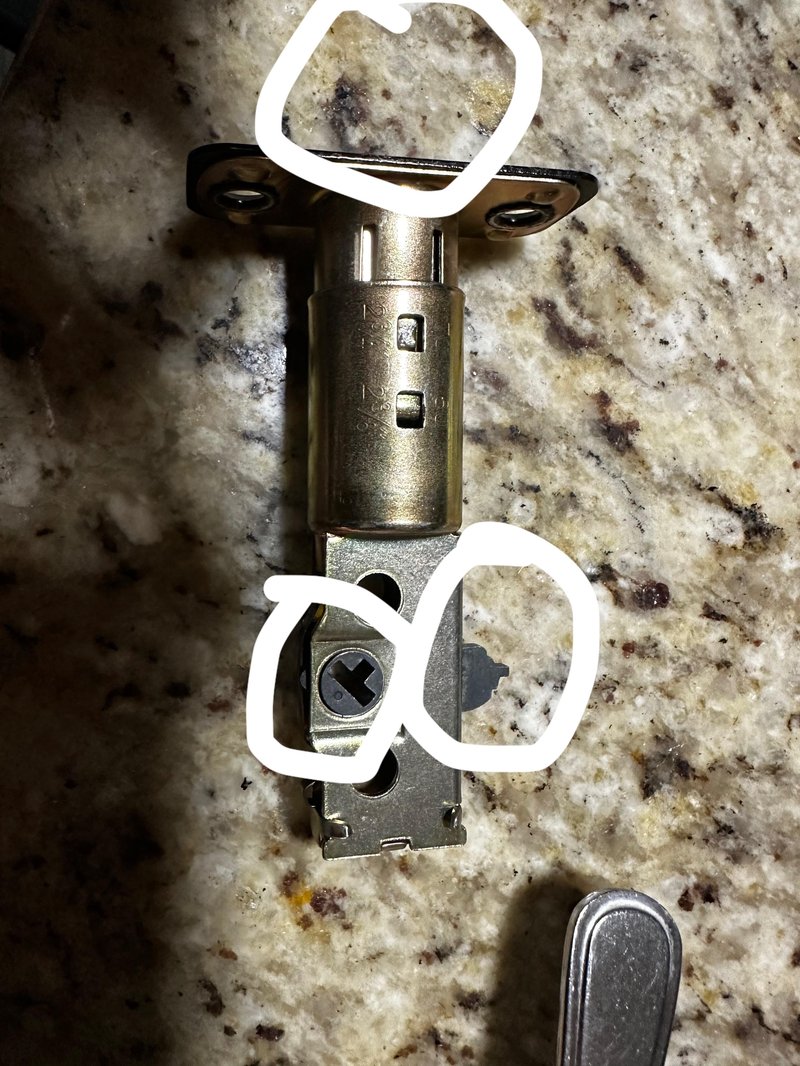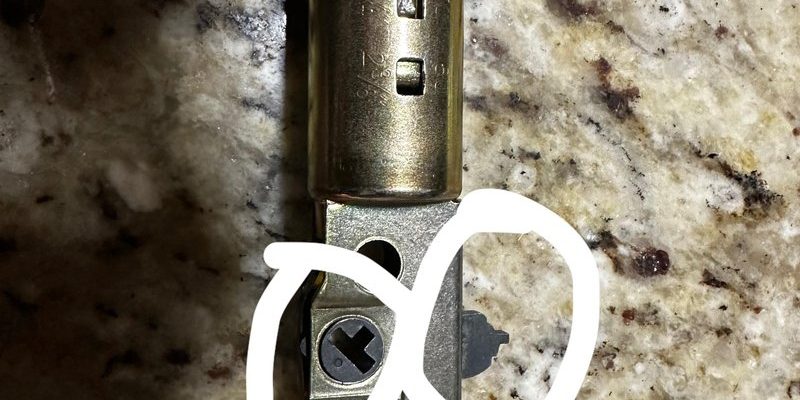
This comes up a lot, especially with popular brands like Schlage, Kwikset, or Yale. Whether you’re dealing with a classic mechanical deadbolt or one of those smart versions, a lock that’s tough to operate with one hand can become a real headache. You might start wondering if something’s wrong with the key, the code, the internal mechanism, or maybe even the way everything’s lined up. Let’s get into why this happens, how to track down the real problem, and—most importantly—what you can do about it.
Why Is Your Deadbolt So Hard to Turn With One Hand?
Here’s the thing: a deadbolt is supposed to be smooth and reliable, not a wrestling match every time. When it only works with two hands, it’s usually a sign something’s off inside. You might feel like the key gets stuck halfway, or the thumb turn just won’t budge unless you grip it with both hands and twist hard. Sometimes it’s a slow fade—you barely notice it getting worse until one day, it’s impossible with anything less than a full-on effort.
Several things can throw your deadbolt out of whack. It could be a buildup of dirt and gunk, a misaligned strike plate, or even swollen wood from humidity making everything feel extra tight. For modern smart locks or electronic deadbolts, low battery or sync issues can also play a role. Each of these little details adds up, making a task that should be easy feel like a test of patience and strength.
You might also notice that some deadbolts just aren’t designed with single-hand use in mind. Older or cheaper models often have smaller thumb turns or keys that don’t glide smoothly. If you have mobility challenges or arthritis, these design flaws become even more obvious—and frustrating. Honestly, nobody wants to deal with that at the end of a long day.
Common Signs Your Deadbolt Needs Attention
So, how do you know if your deadbolt problem is a simple fix or something bigger? Pay attention to how it feels. If you need to wiggle the key, put your hip into the door, or try the code three times before it clicks, those are all signs of trouble brewing. You might also hear grinding, clicking, or creaking when you try to turn the lock—or maybe it just gets jammed altogether.
Sometimes, you’ll notice the lock works fine when the door is open, but once it’s closed, it refuses to budge. That’s usually a sign the deadbolt and strike plate are out of alignment. It’s like trying to fit a square peg in a round hole—the pieces just aren’t lining up like they should. Other times, your code or remote entry system might “forget” your settings, making you fumble with sync or reset steps over and over.
It’s easy to ignore these little quirks at first, but left alone, small locking problems can quickly turn into big headaches. A stuck or stubborn deadbolt isn’t just a hassle—it’s a security risk, too. If you can’t lock up fast or someone in your home struggles to operate it, it’s time to troubleshoot.
Checking For Alignment and Fit Issues
Let me explain why alignment is such a big deal. Your deadbolt is basically a bolt sliding into a hole cut out of your door frame—the strike plate. If either piece moves even a little, everything can go off. Swollen wood (thanks, humidity), a door that’s sagged over time, or even someone yanking too hard on the lock can knock things out of place.
To check this, open the door and try the deadbolt with one hand. If it moves freely, alignment is probably the issue. When you close the door and meet resistance, you’ve found your culprit. Sometimes, just tightening the door hinges or adjusting the strike plate with a screwdriver can make everything snap back into shape. For others, you might need to file the strike plate opening a bit wider or reposition it.
You’d be surprised how often these tiny adjustments make a world of difference. It’s not just for pros—most people can manage it with a screwdriver and a little patience. Just be careful not to over-tighten screws or make gaps too wide, or you’ll end up with a loose, rattly door.
Dealing With Key and Cylinder Problems
Ever feel like your key is fighting back, refusing to slide in or out smoothly? That’s often a sign your deadbolt’s cylinder needs a little TLC. Dirt, old grease, or just daily wear can gum things up inside. For mechanical deadbolts, you can try using a graphite powder lubricant—not oil, since that can attract more gunk down the line.
To do this, puff a tiny bit of graphite inside the keyway and work your key in and out a few times. This can smooth out sticking spots right away. If things are still rough, your key might be worn down, especially if it’s an older duplicate. A locksmith can cut you a new one that matches the original code more closely, making operation much easier.
If you use a keyless code deadbolt, sometimes the keypad or motor inside the lock can get out of sync or need a reset. Low batteries are a common cause of sticky or sluggish smart deadbolts, so don’t forget to swap in fresh ones before you dig any deeper.
Lubricating Your Deadbolt the Right Way
Here’s an insider tip: proper lubrication makes a world of difference. Over time, a deadbolt’s inner workings dry out, making everything stiff and hard to turn. But not all lubricants are created equal. Aerosol sprays or WD-40 might seem handy, but they can gum things up and actually make your lock worse in the long run.
Use a dry graphite lock lubricant or a silicone-based spray (no residue, less mess). Hold the nozzle right up to the keyhole, give it a short burst, and work the action back and forth (either the key or thumb turn if it’s a keyless type). You’ll usually feel things loosen up almost instantly. For smart locks, check your brand’s manual—some recommend very specific products or warn against spraying near electronic components.
If your deadbolt is still tough to operate after lubing, alignment is probably the main issue—not a lack of lubricant.
Issues With Smart Deadbolts and Electronic Locks
Modern smart deadbolts—like those from Schlage, August, or Yale—can make life easier, but they have their own quirks. If your lock is slow, unresponsive, or demands two hands to operate the thumb turn, low batteries or sync problems are the usual suspects. Start by swapping in fresh batteries—usually AA or CR123—making sure you’re using good ones, not the dollar-store kind.
Check if your lock has lost its code pairing with the remote, app, or keypad. Sometimes a reset or re-sync fixes odd behavior. Most brands include a step-by-step process in the manual (press and hold, enter a code, etc.). If the deadbolt sticks only sometimes, listen for clicking or grinding—an internal gear might be jammed, or the door might be pressing unevenly on the lock.
Keep in mind, electronic deadbolts still depend on physical alignment. If the bolt isn’t lining up smoothly with the strike plate, the motor can struggle or give up altogether. You might hear a whirring or clicking as it tries and fails to move. Adjustments here help just as much as with a regular lock.
Simple Fixes for Better One-Handed Use
Sometimes it’s not a technical problem—it’s just that your deadbolt wasn’t built for easy, one-handed use. Some older models have tiny thumb turns or stiff actions that are tough for anyone, especially if you’re in a hurry or have limited hand strength. Upgrading to a lock with a larger, more ergonomic thumb turn can be a game changer. There are also ADA-compliant models made with easier, less forceful operation in mind.
If you’re using a remote or app to unlock a smart deadbolt, make sure everything’s paired and synced correctly. Laggy connections or slow apps can make it feel like you’re wrestling with your door every time you come home. Re-pairing, resetting the lock, or updating the app/software can help.
For families or roommates, think about how each person uses the lock. Kids, older adults, and people with disabilities especially benefit from smoother, one-handed designs. Sometimes installing a handle lever instead of a traditional knob makes using the deadbolt way easier for everyone.
When To Call a Locksmith (And What to Expect)
Let’s be honest—not every problem has a quick DIY answer. If your deadbolt is stuck tight, the key breaks off, or you just can’t get things to line up no matter what, it’s time to bring in a pro. Locksmiths deal with tough deadbolts every day, and they have the tools to fix alignment, re-key locks, or swap out broken parts in a snap.
Don’t wait until you’re locked out in the rain or the mechanism snaps off in your hand. Most locksmiths can fix or replace a stubborn deadbolt on the spot. They can also suggest upgrades—like a universal remote or an easier-to-use model—that fit your door and your lifestyle. It might cost a little more up front, but think of it as investing in your peace of mind (and saving your wrists).
If you’re renting or live in an apartment, check with your landlord before making changes. Many property managers have preferred locksmiths or policies about approved lock types.
Choosing the Right Deadbolt for One-Handed Operation
If you’re thinking about swapping out your old deadbolt for something easier to use, there are a few things to look for. Modern models from brands like Schlage, Kwikset, and Yale offer options with oversized thumb turns, easy-to-grip levers, and even code or remote operation for true one-handed convenience. Some universal smart locks work with most standard doors, so you don’t need to worry about brand-specific codes or resets.
For the best experience, pick a deadbolt that matches your door thickness, hardware finish, and the way your family uses the entry. ADA-compliant locks are designed for minimal effort and can make a huge difference, especially for people with arthritis or mobility challenges.
If you already have a smart lock, keeping the app, firmware, and batteries up to date heads off most remote syncing or pairing issues before they start. And remember, even the fanciest code or remote entry system is only as good as the basics—alignment, lubrication, and battery health.
Final Thoughts: Smoother Entry and Peace of Mind
Having a deadbolt that’s tough to operate with one hand shouldn’t be just “one of those things” you live with. Whether you’re dealing with a sticky key, a tired remote, or a smart lock that’s out of sync, there’s usually a clear reason—and a practical fix. Sometimes it’s about the right lubricant or a tiny tweak to the strike plate. Other times, an upgrade to a better-designed deadbolt or a quick reset can save you hours of daily frustration.
Don’t settle for a lock that makes you fumble, especially when the answer might only be a few steps away. With a little troubleshooting and some smart upgrades, coming home (or locking up behind you) can go back to being as simple as it should be—even when your hands are full.
